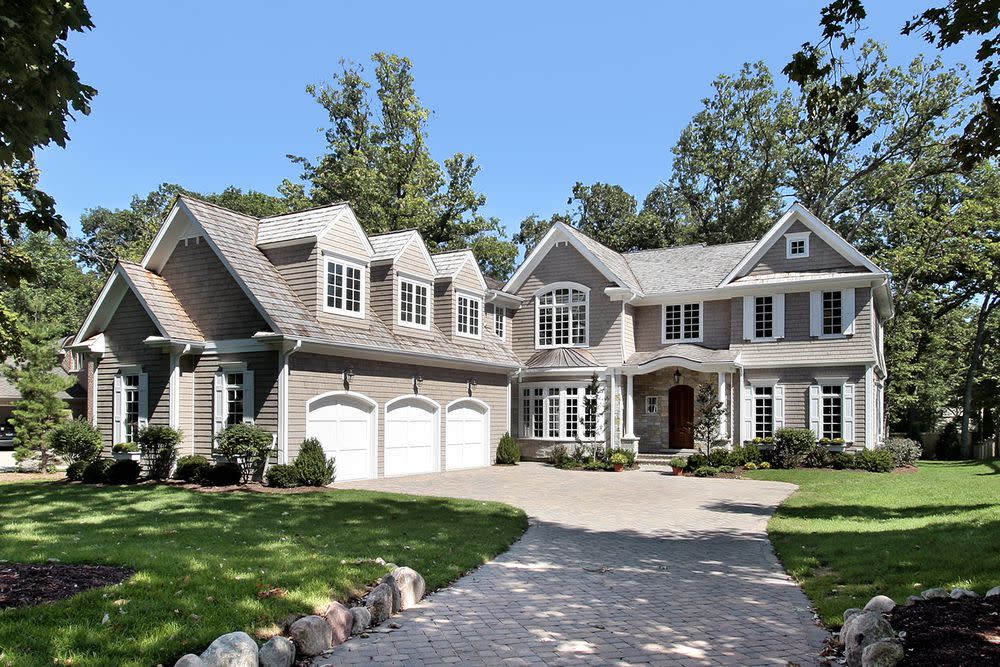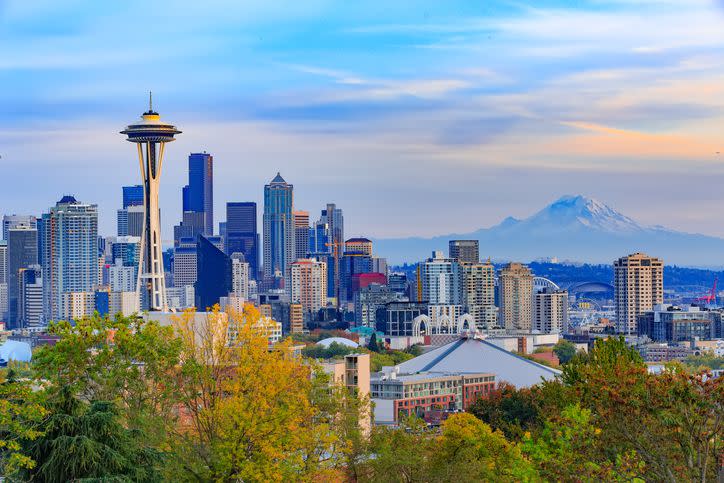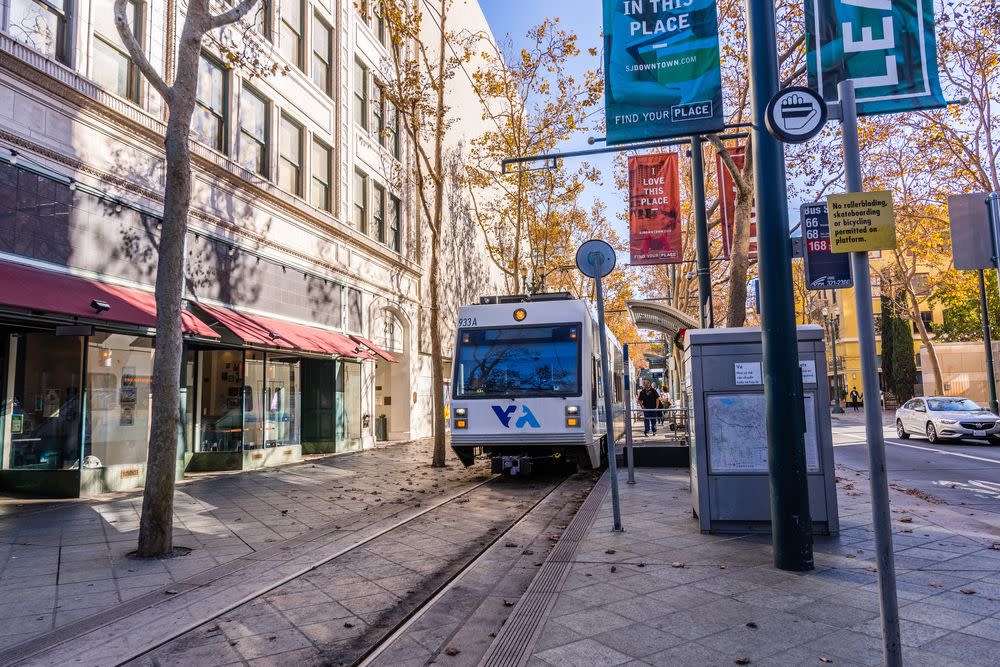Where You'll Find the Most Million-Dollar Homes in America

Million-Dollar Markets
Though home prices have risen significantly over the past two years, paying $1 million or more for a house may still seem excessive to most Americans. However, just because million-dollar homes aren’t common throughout the U.S. doesn’t mean they aren’t prevalent in some areas.
To see where million-dollar houses are most common, LendingTree analyzed data from the U.S. Census Bureau’s 2020 American Community Survey to look at the share of million-dollar homes in each of the nation’s 50 largest metropolitan areas.
While million-dollar homes aren’t prevalent in most of the nation’s largest metros, they do make up a large share of homes in some notoriously high-cost areas like San Jose and San Francisco.

Key findings
Million-dollar homes are relatively uncommon in most of the country. An average of only 4.71% of the owner-occupied homes in the nation’s 50 largest metros are valued at $1 million or more.
The prevalence of million-dollar homes can vary significantly by metro. For example, 52.89% of owner-occupied homes are valued at $1 million or more in San Jose, Calif., making it the only one of the nation’s 50 largest metros where a majority of owner-occupied homes are worth at least $1 million. In the metro with the smallest share of $1 million homes, Buffalo, N.Y., that figure is 0.56%.
Of the 10 metros with the largest share of million-dollar homes, the four with the highest percentage of million-dollar homes are in California. Driven by factors including dense populations and the significant wealth generated by the tech and entertainment industries, an average of 31.33% of owner-occupied homes across San Jose, San Francisco, Los Angeles and San Diego are valued at at least $1 million.
Buffalo, N.Y., Cleveland and Pittsburgh have the smallest share of homes valued at $1 million or more. An average of only 0.61% of owner-occupied homes in these generally affordable metros are worth $1 million or more.

10. Denver
Number of owner-occupied housing units: 711,209
Number of owner-occupied housing units valued at or above $1 million: 28,602
Percentage of owner-occupied units valued at $1 million or more: 4.02%
Median value of owner-occupied housing units: $411,800

9. Miami
Number of owner-occupied housing units: 1,299,739
Number of owner-occupied housing units valued at or above $1 million: 60,385
Percentage of owner-occupied units valued at $1 million or more: 4.65%
Median value of owner-occupied housing units: $298,400

8. Washington, D.C.
Number of owner-occupied housing units: 1,434,386
Number of owner-occupied housing units valued at or above $1 million: 102,450
Percentage of owner-occupied units valued at $1 million or more: 7.14%
Median value of owner-occupied housing units: $436,600

7. Boston
Number of owner-occupied housing units: 1,143,559
Number of owner-occupied housing units valued at or above $1 million: 95,518
Percentage of owner-occupied units valued at $1 million or more: 8.35%
Median value of owner-occupied housing units: $461,500

6. Seattle
Number of owner-occupied housing units: 921,152
Number of owner-occupied housing units valued at or above $1 million: 93,058
Percentage of owner-occupied units valued at $1 million or more: 10.10%
Median value of owner-occupied housing units: $471,900

5. New York City
Number of owner-occupied housing units: 3,643,816
Number of owner-occupied housing units valued at or above $1 million: 383,583
Percentage of owner-occupied units valued at $1 million or more: 10.53%
Median value of owner-occupied housing units: $465,400

4. San Diego
Number of owner-occupied housing units: 609,350
Number of owner-occupied housing units valued at or above $1 million: 82,402
Percentage of owner-occupied units valued at $1 million or more: 13.52%
Median value of owner-occupied housing units: $595,600

3. Los Angeles
Number of owner-occupied housing units: 2,129,700
Number of owner-occupied housing units valued at or above $1 million: 395,035
Percentage of owner-occupied units valued at $1 million or more: 18.55%
Median value of owner-occupied housing units: $641,300

2. San Francisco
Number of owner-occupied housing units: 935,620
Number of owner-occupied housing units valued at or above $1 million: 377,736
Percentage of owner-occupied units valued at $1 million or more: 40.37%
Median value of owner-occupied housing units: $888,500

1. San Jose
Number of owner-occupied housing units: 370,241
Number of owner-occupied housing units valued at or above $1 million: 195,822
Percentage of owner-occupied units valued at $1 million or more: 52.89%
Median value of owner-occupied housing units: $1,041,800

Shopping around for a mortgage
Since the start of the year, mortgage rates have risen dramatically. These higher rates have made buying homes more expensive, even in areas where home prices haven’t necessarily increased.
With that said, because different lenders can offer different rates to the same person, it’s often possible for borrowers to find a lower rate on their mortgage by shopping around for a lender before buying.
A recent LendingTree study found that the spread between the highest and lowest APRs offered to borrowers across the nation’s 50 largest metros who received offers from three or more lenders was 82 basis points. To put that spread into perspective, the study found that those borrowers could have saved an average of more than $63,000 over the lifetime of their mortgages by choosing the lowest rate offered to them.
Though these savings aren’t exclusive to those looking to buy million-dollar homes, higher-cost borrowers are likely to see larger savings the lower the rate they get. As a result, if you’re planning on buying in a high-cost area, one of the best ways you can save money is by shopping for a mortgage before buying.

Additional tips for buying a home in a high-cost area
Even if you’re not planning on buying a million-dollar home, you may still find yourself in a high-cost area where you’ve got no choice but to spend extra to get a house. Here are three tips outside of shopping around for a mortgage that could help buyers — even those who aren’t necessarily wealthy — make purchasing in an expensive area a bit less challenging.

1. Look into different mortgage programs
Some kinds of mortgages, like those insured by the Federal Housing Administration (FHA), are often easier to qualify for than other types of mortgages. As a result, they can be good options for those who don’t necessarily have a stellar credit score or a ton of cash for a down payment. This is true even in high-cost areas, where FHA loan limits can be as high as $970,800.

2. Boost your credit score
Though options exist for lower-credit borrowers, it’s typically easier to qualify for a mortgage when you have a higher credit score. In a high-cost area, good credit is often especially important, as it can help you get a lower rate on your mortgage that makes housing more affordable. As a result, before you decide to buy, you should try to boost your score by paying down other debts and limiting how often you apply for new credit.

3. Leverage your ability to work remotely
With remote work becoming more prevalent, it may be possible for some employees to move to lower-cost areas that are farther away from their offices without needing to worry about long commutes or losing their jobs. Of course, you should be certain that your employer won’t call you back to the office before you decide to buy a home that isn’t near where you work.

Methodology
LendingTree ranked the nation’s 50 largest metropolitan statistical areas (MSAs) by the share of owner-occupied homes (with or without a mortgage) valued at $1 million or more.
The data comes from the U.S. Census Bureau’s 2020 American Community Survey with five-year estimates (the latest available at this study’s writing).
To determine the share of million-dollar homes in a metro, LendingTree divided the number of owner-occupied housing units priced at $1 million or more by the overall number of owner-occupied housing units in the area.
This article originally appeared on LendingTree.com and was syndicated by MediaFeed.org.
